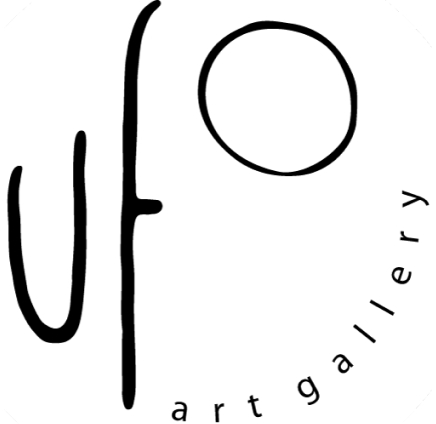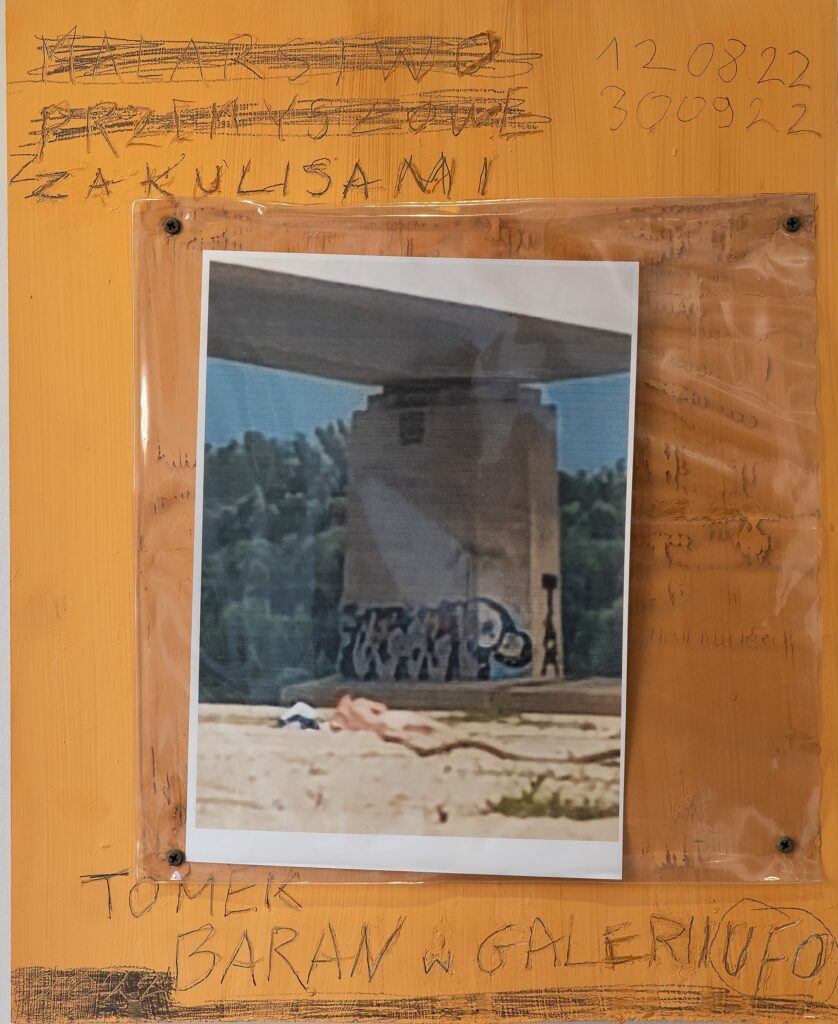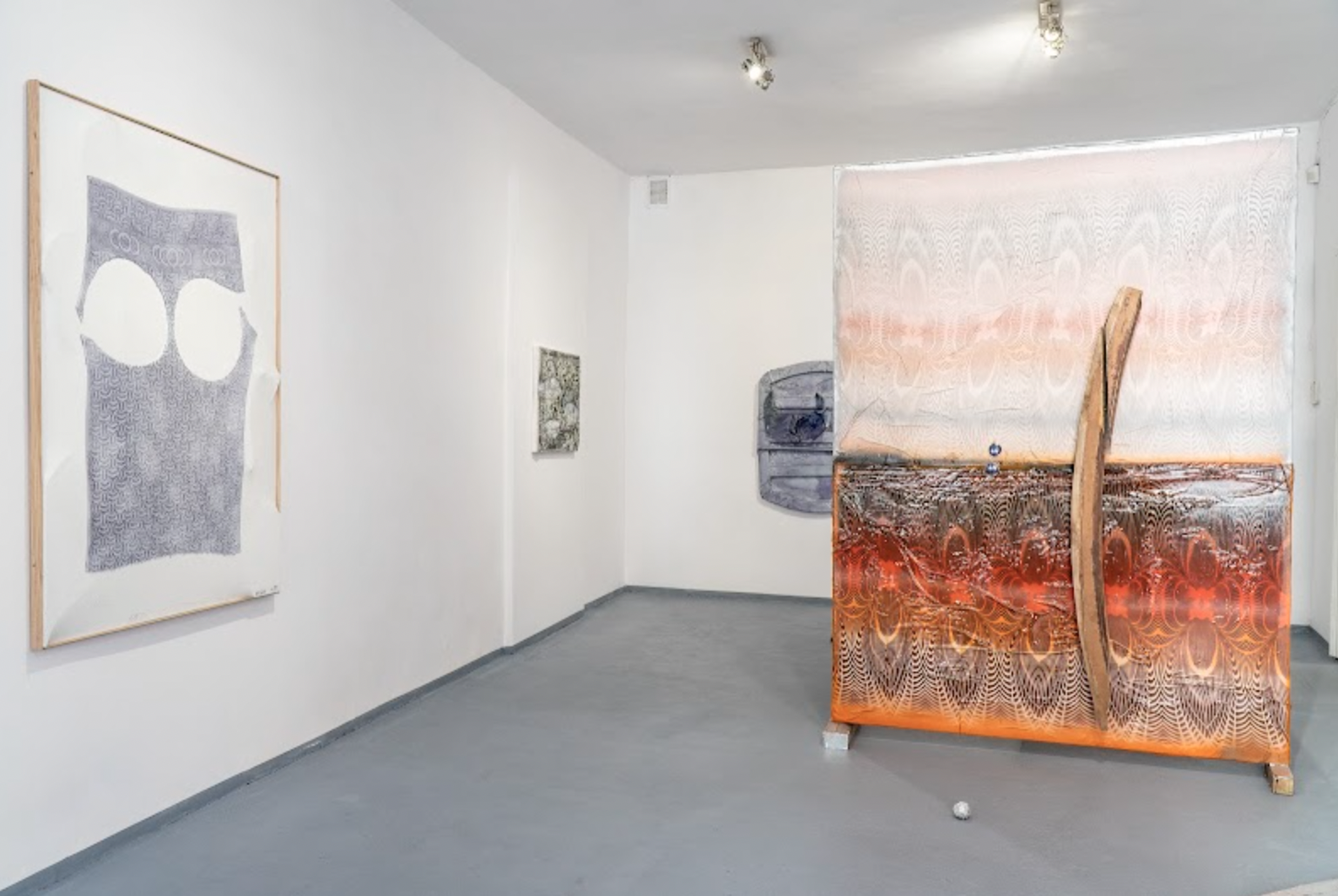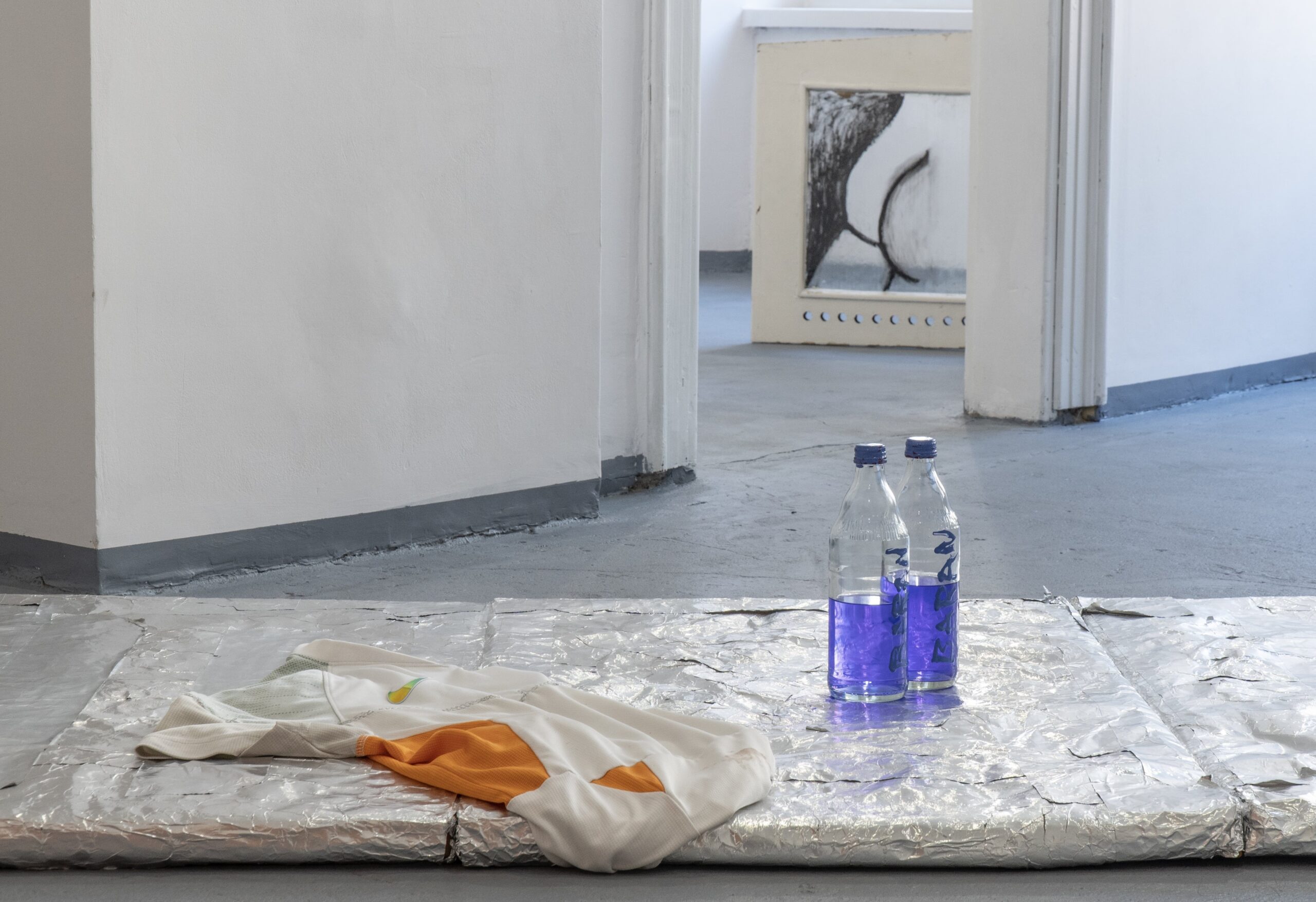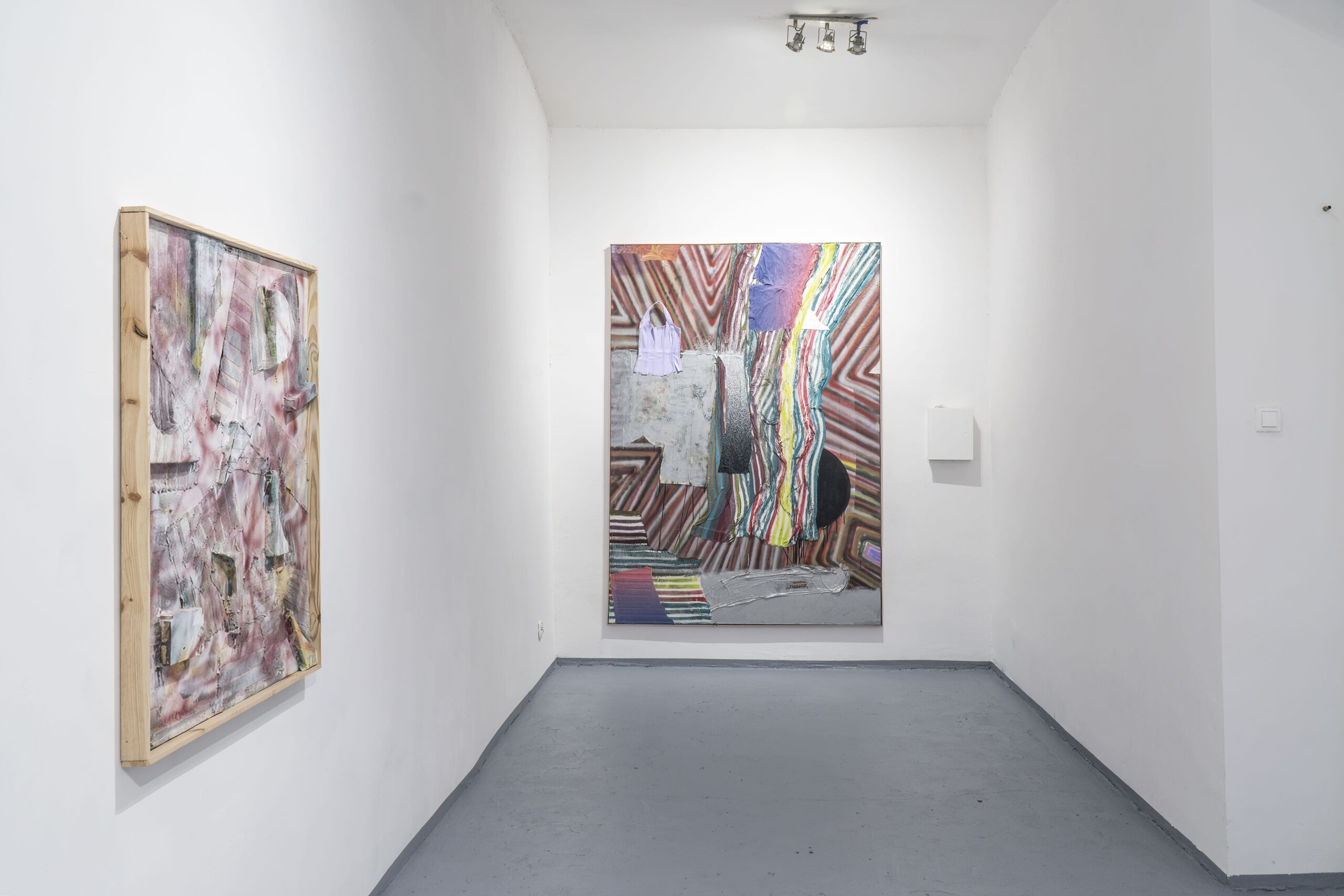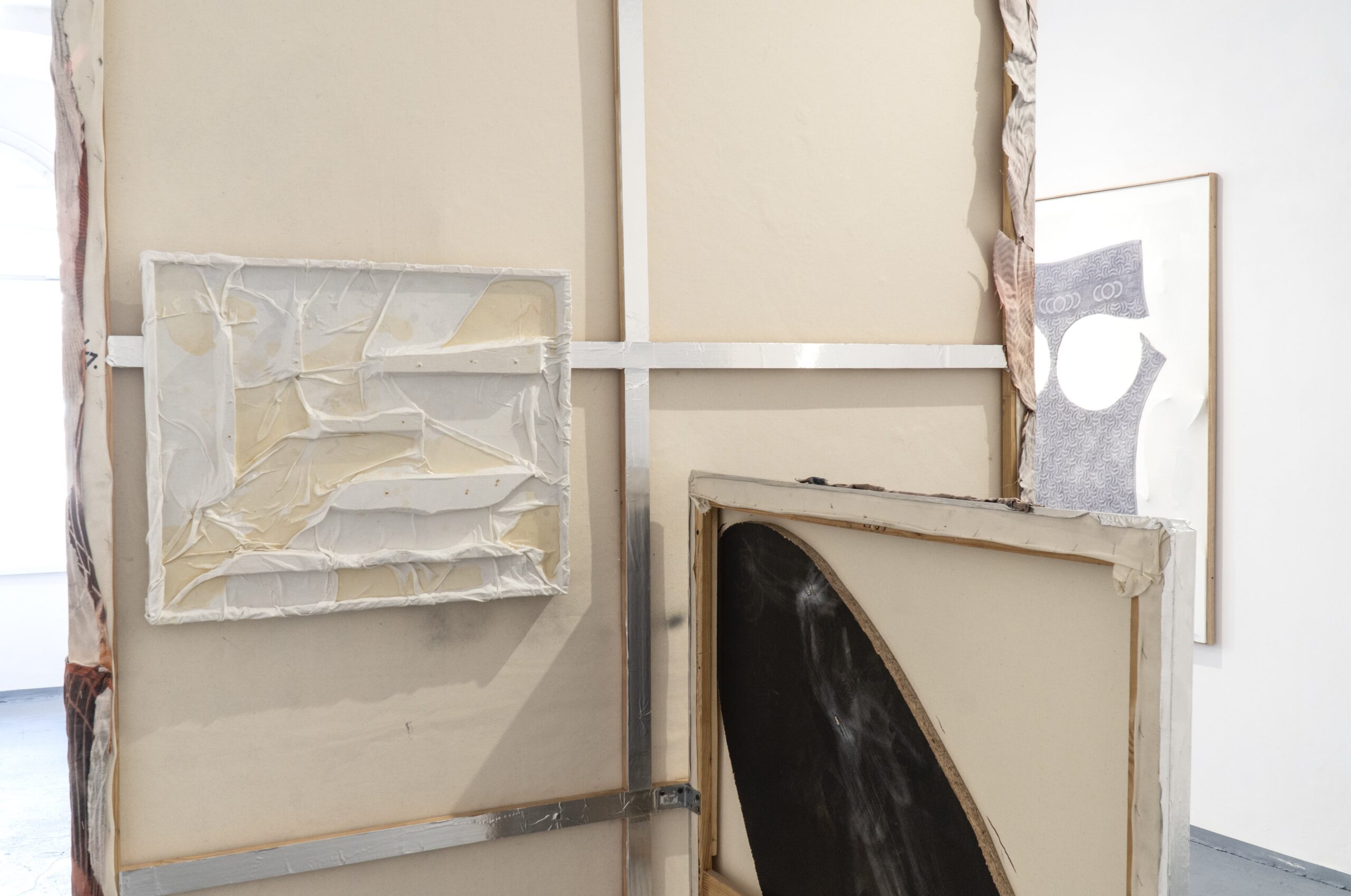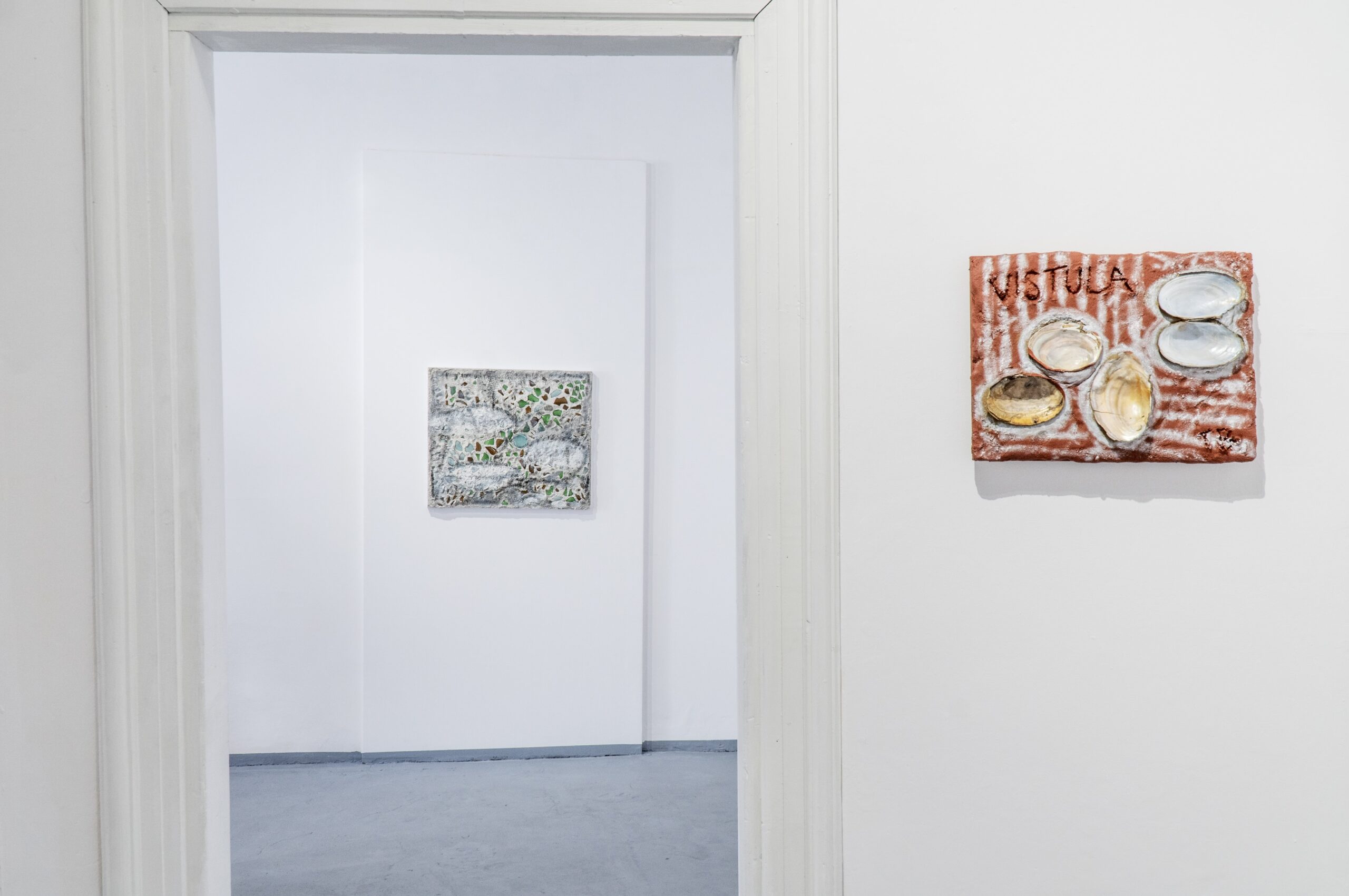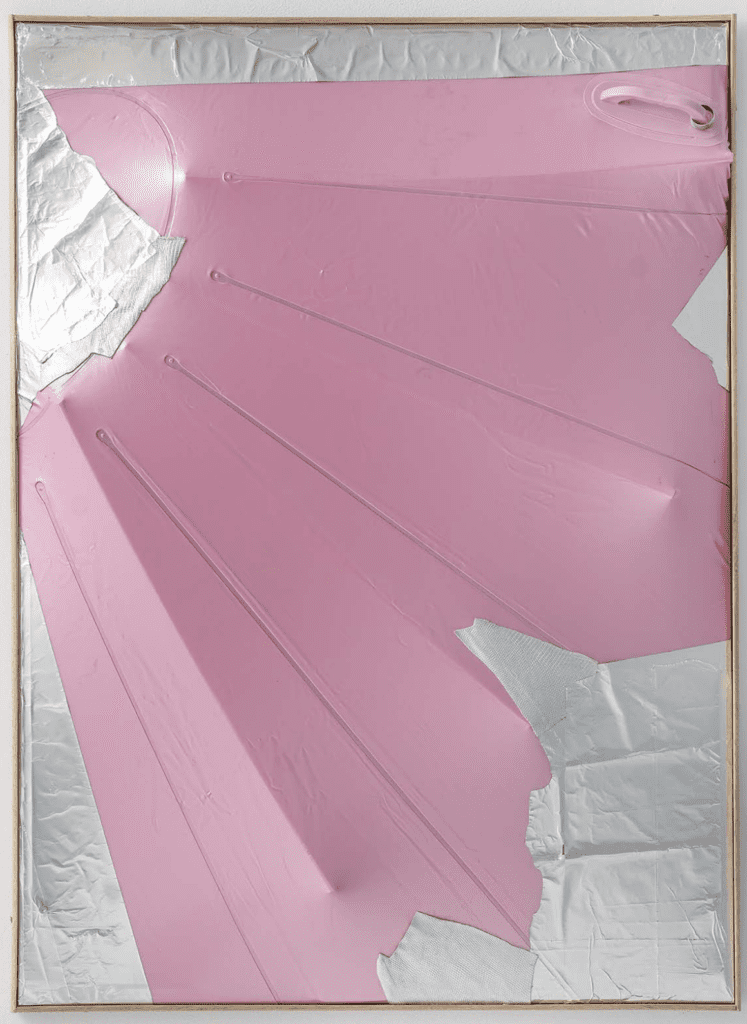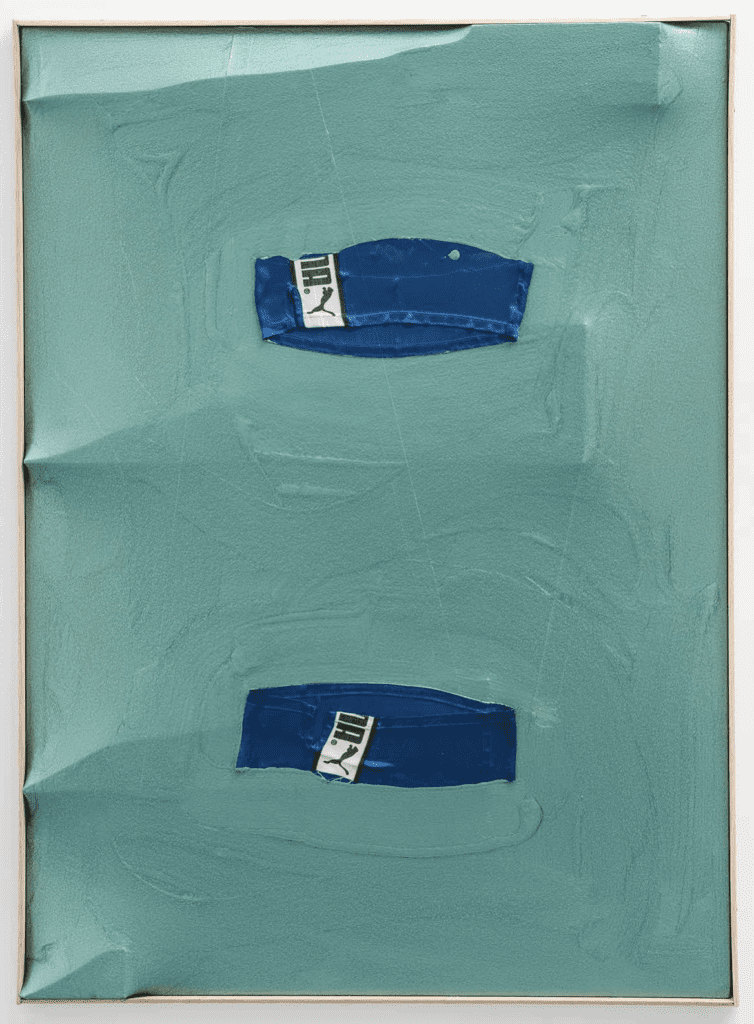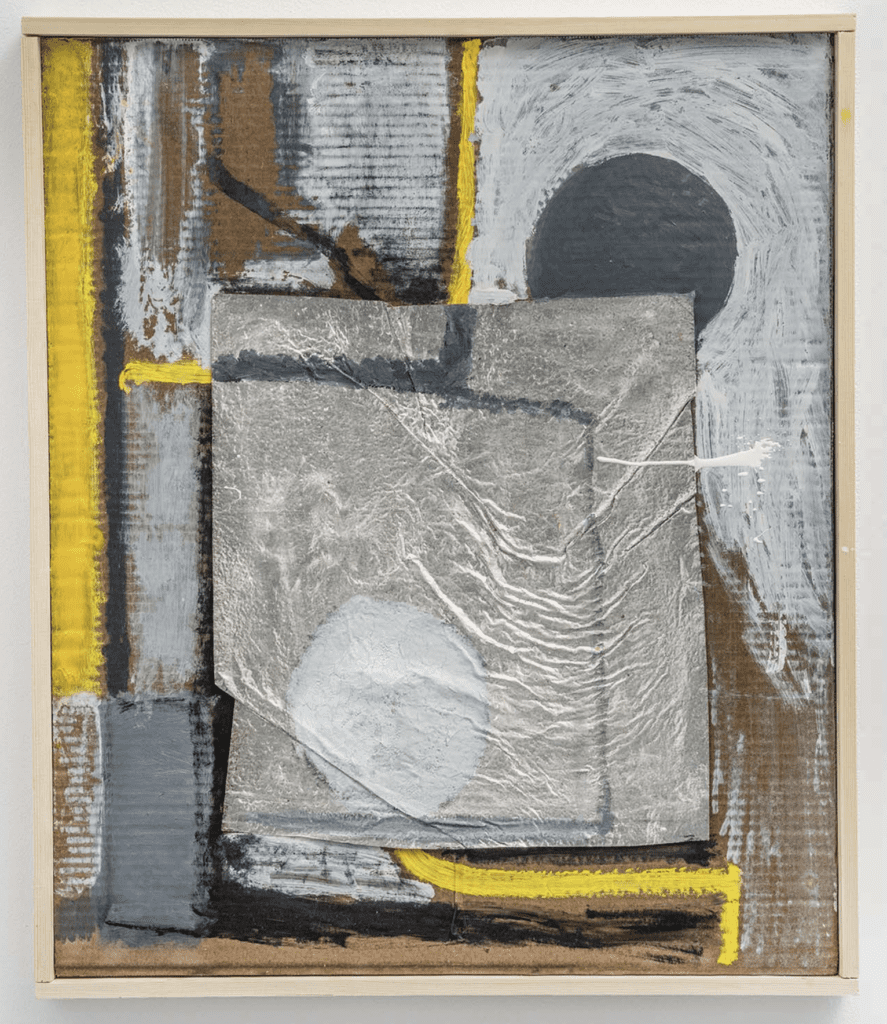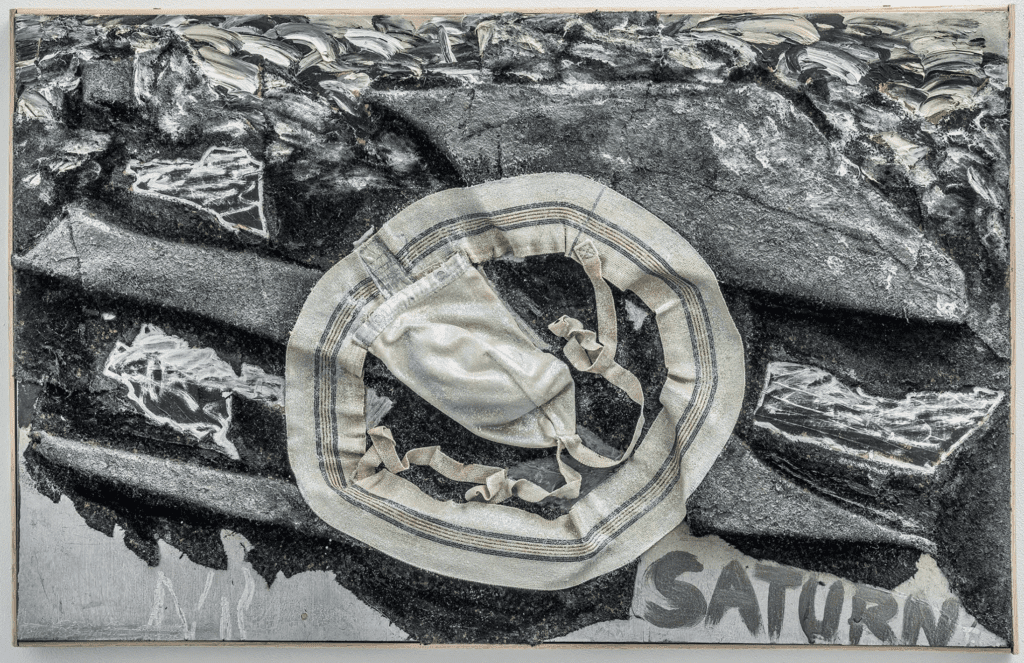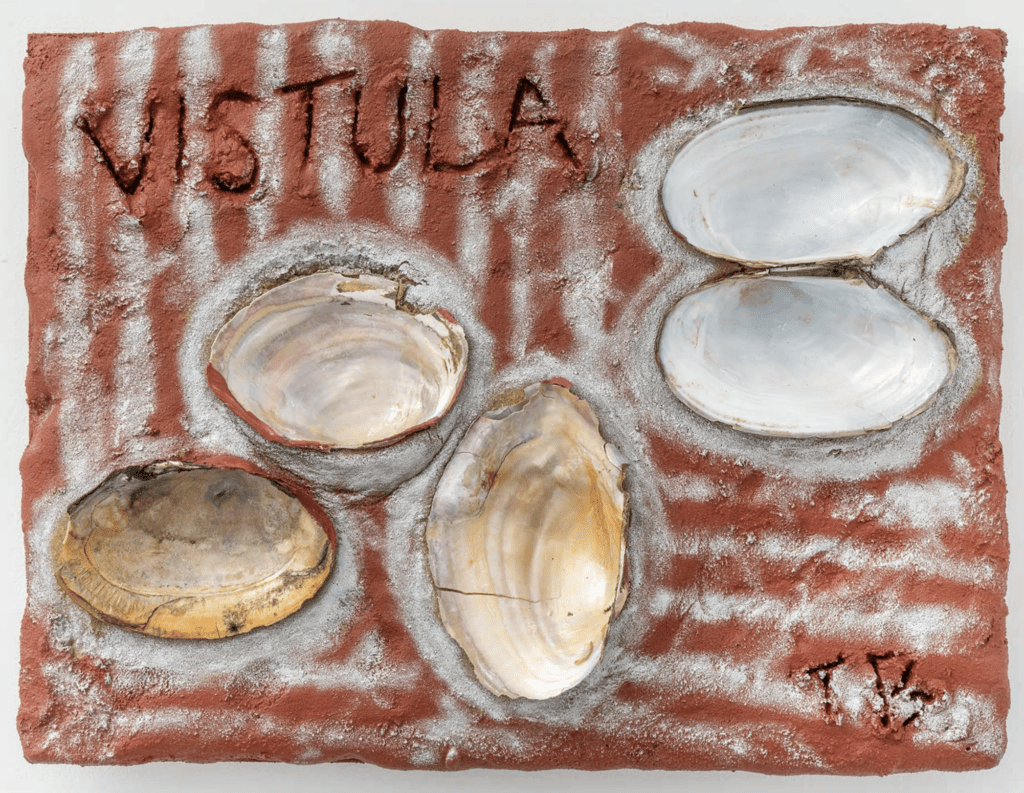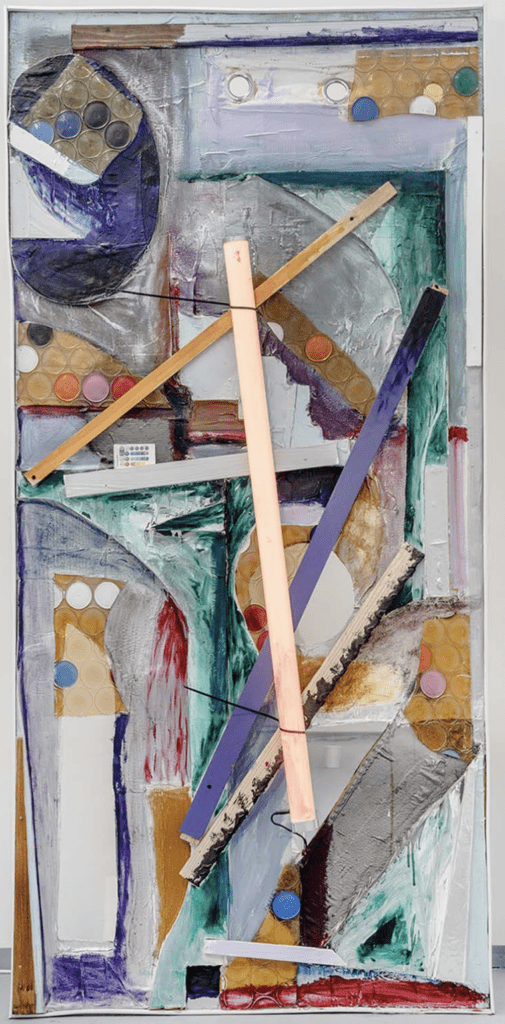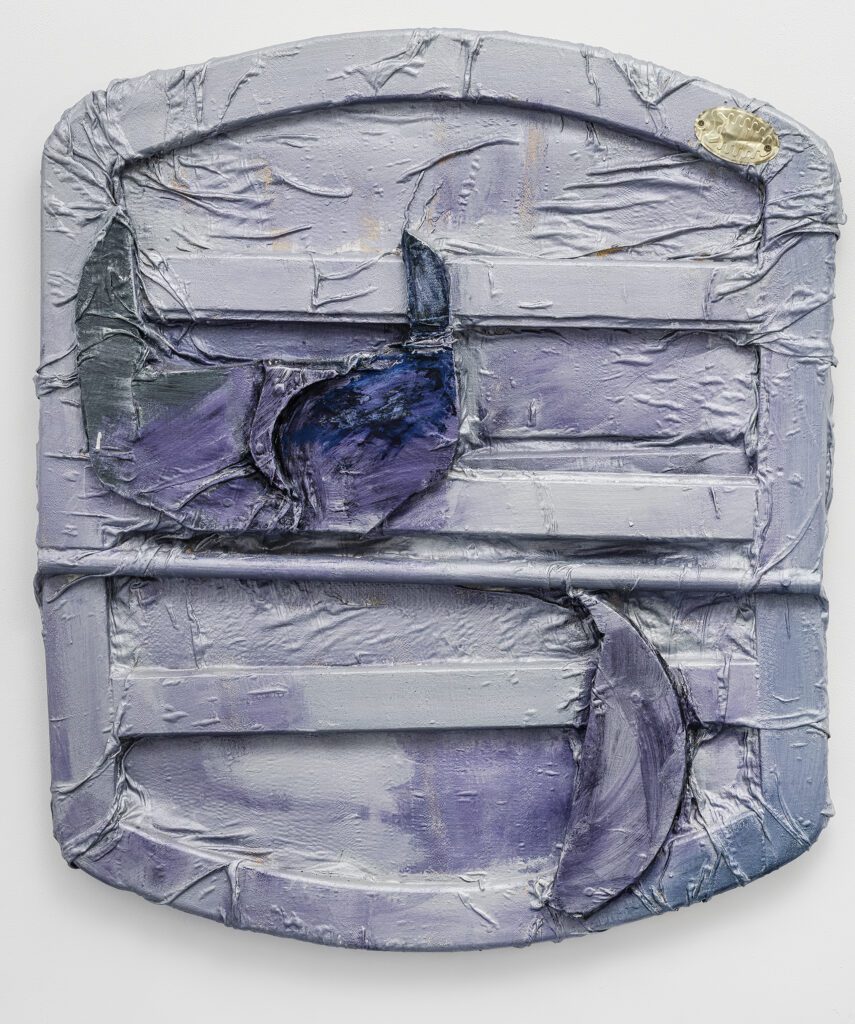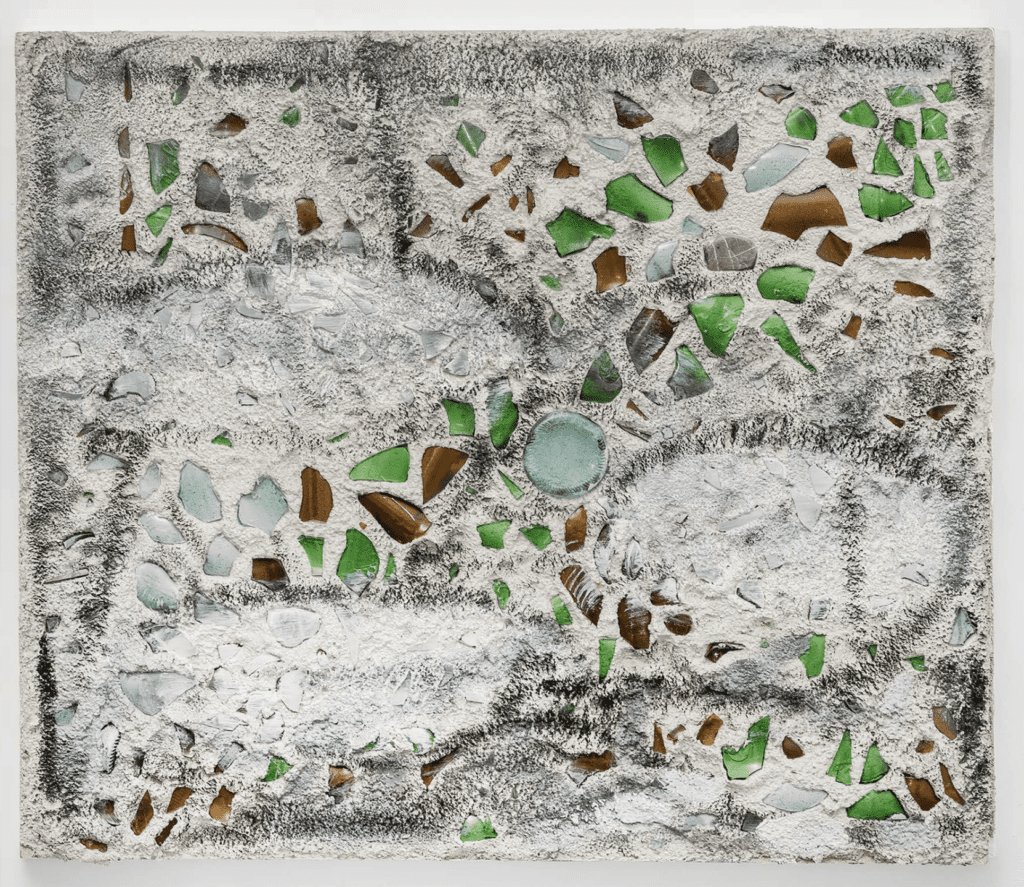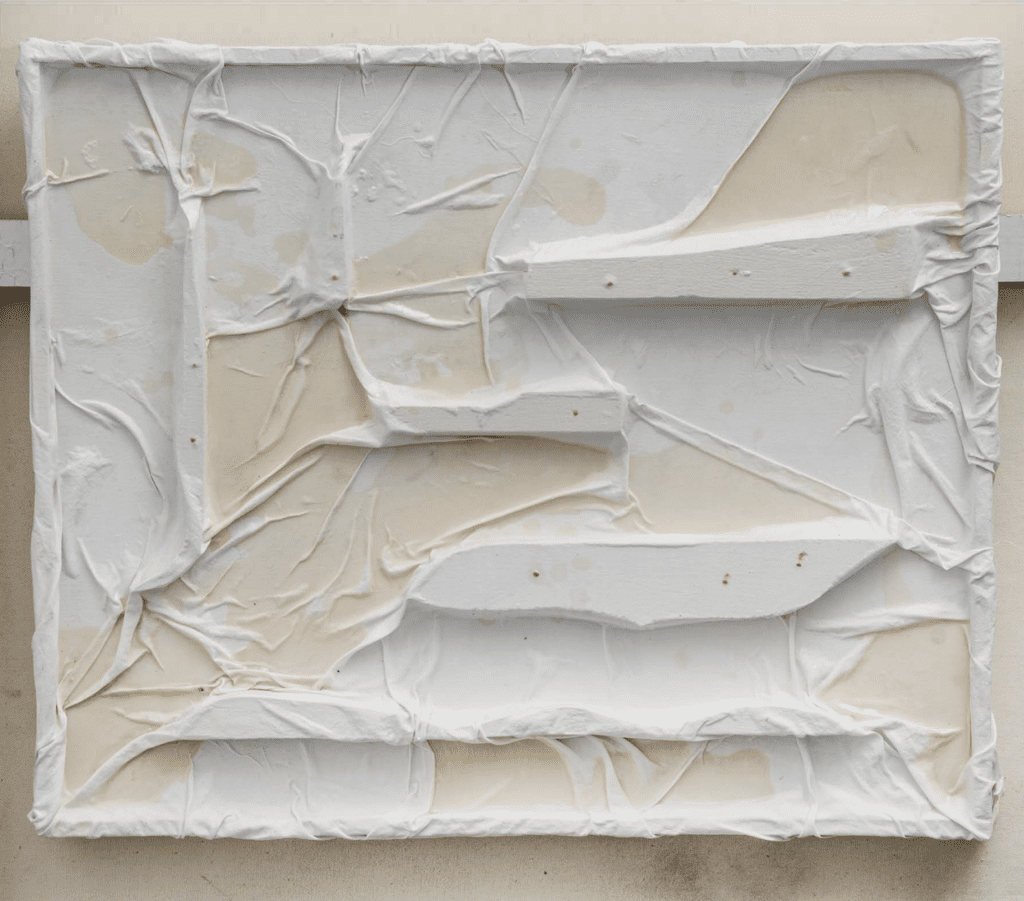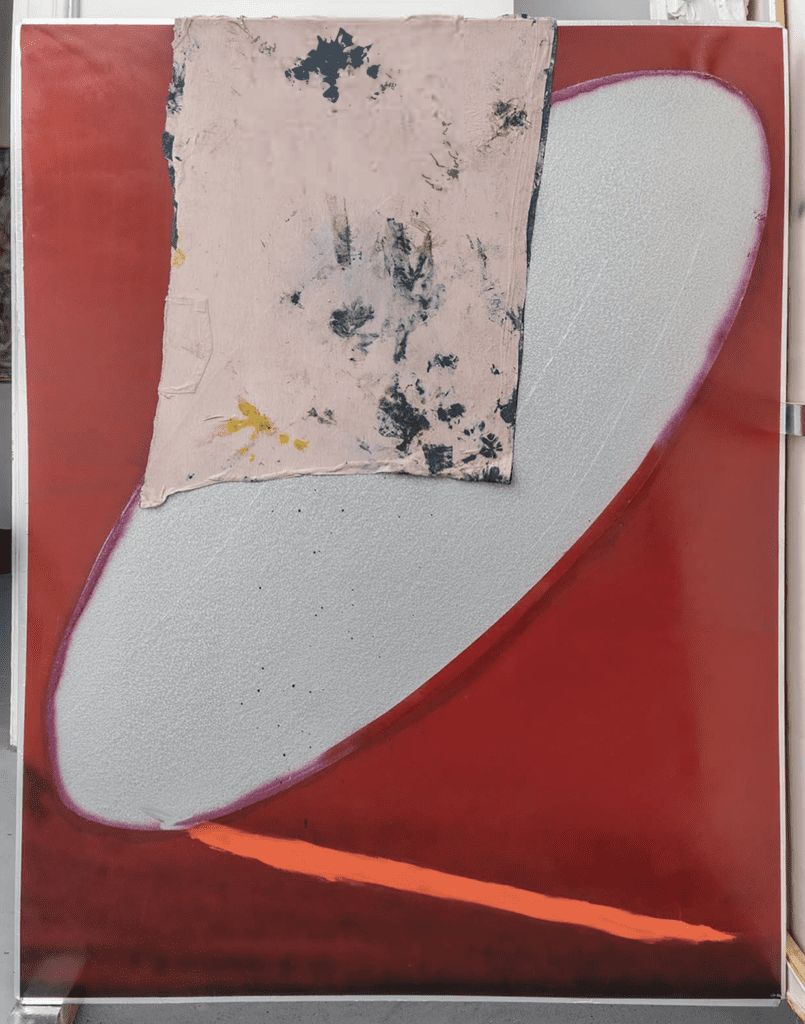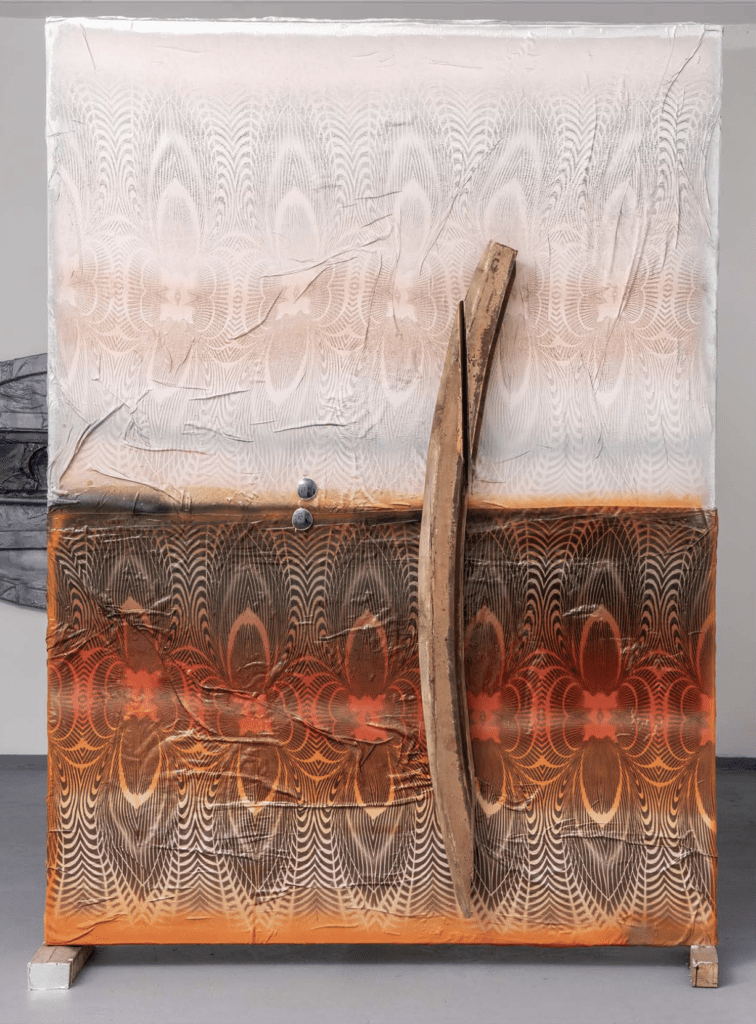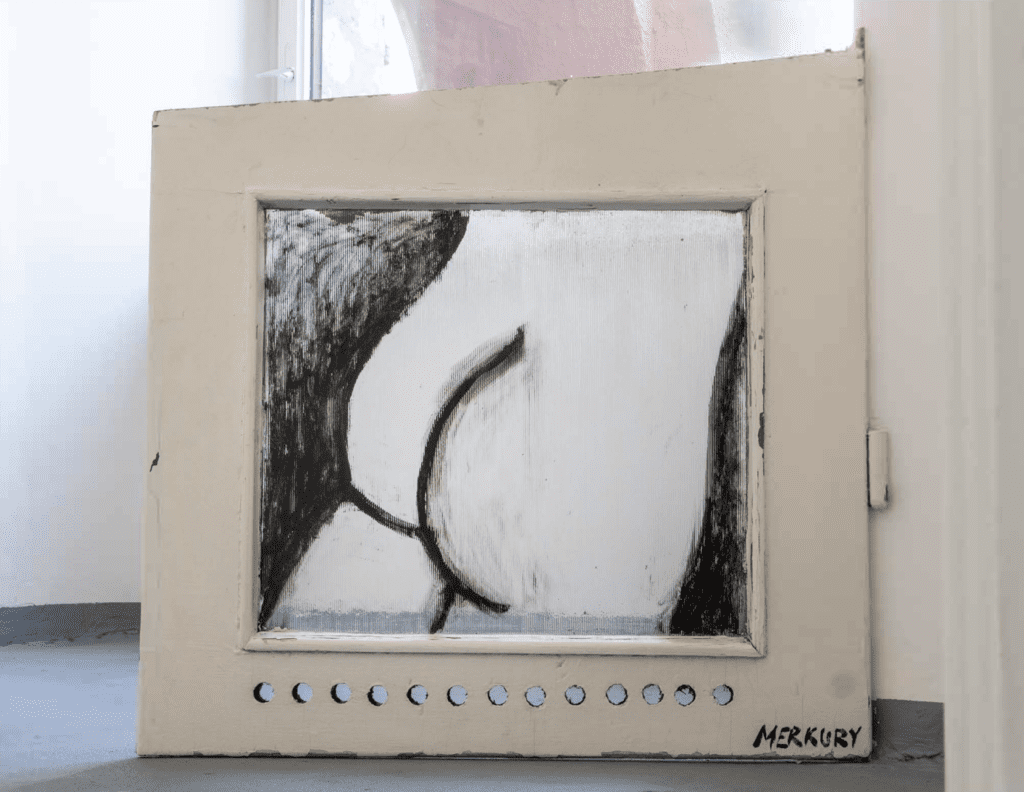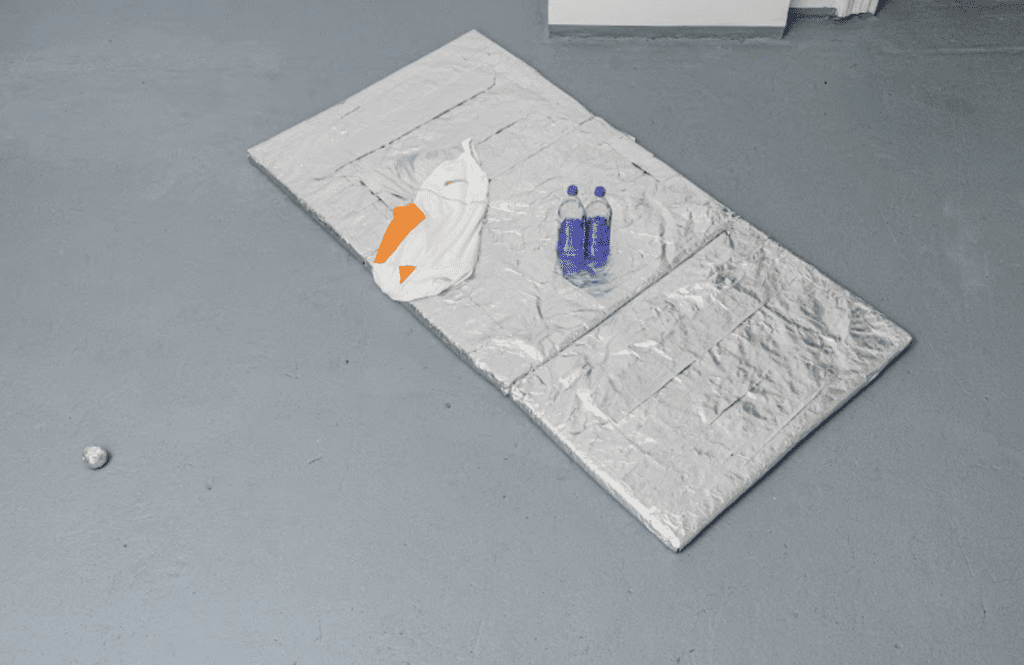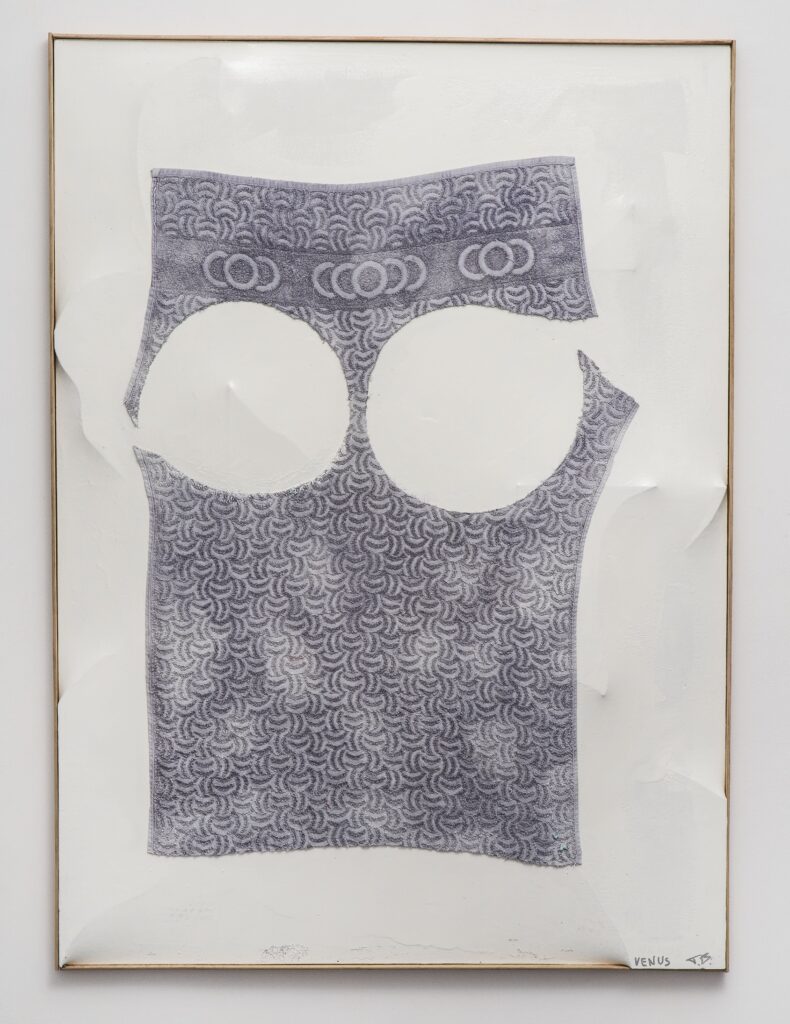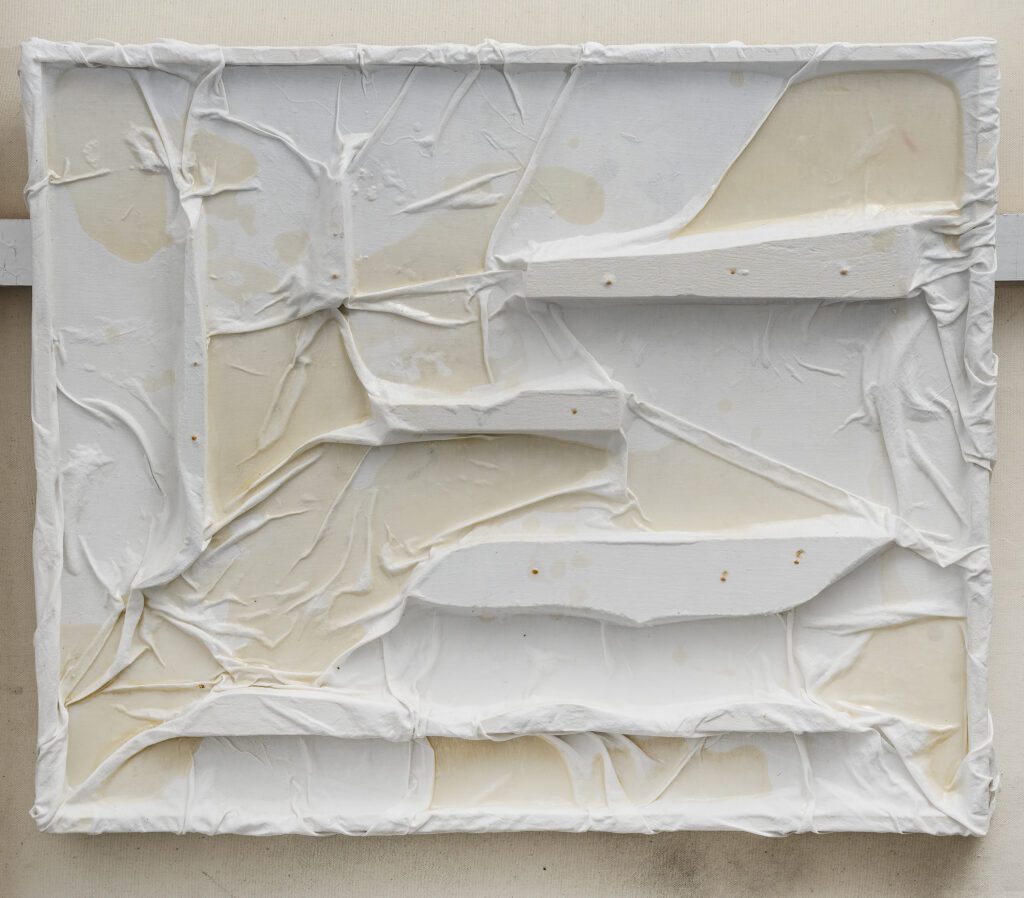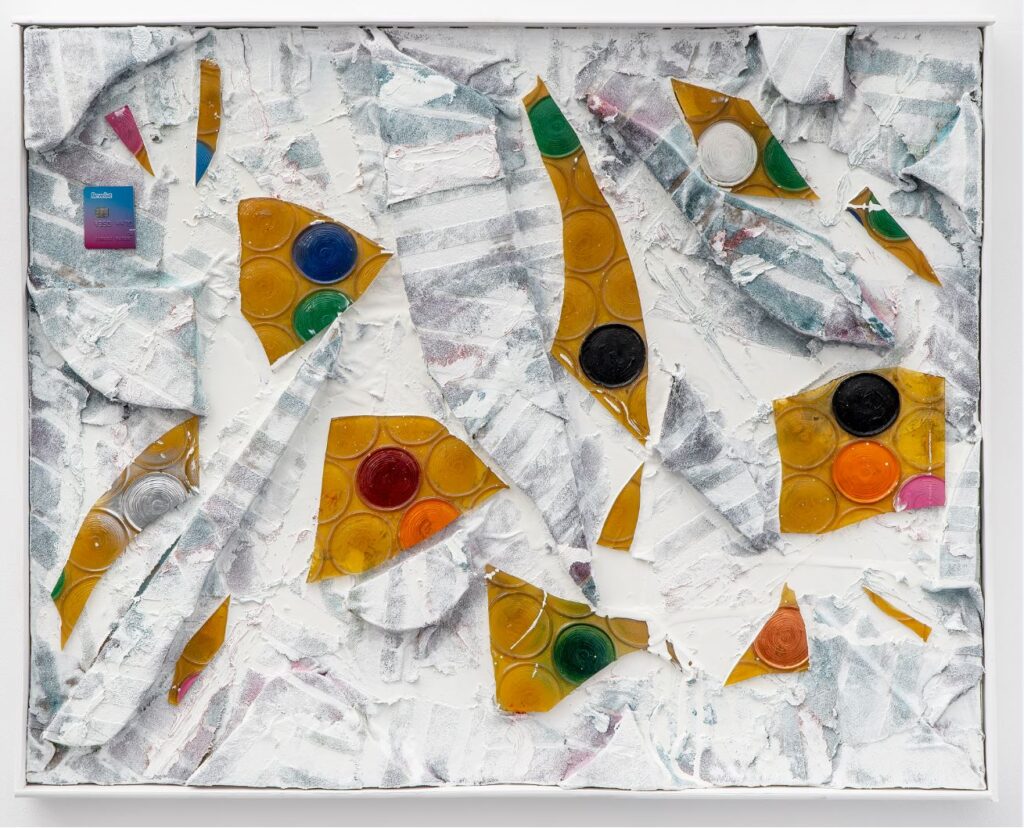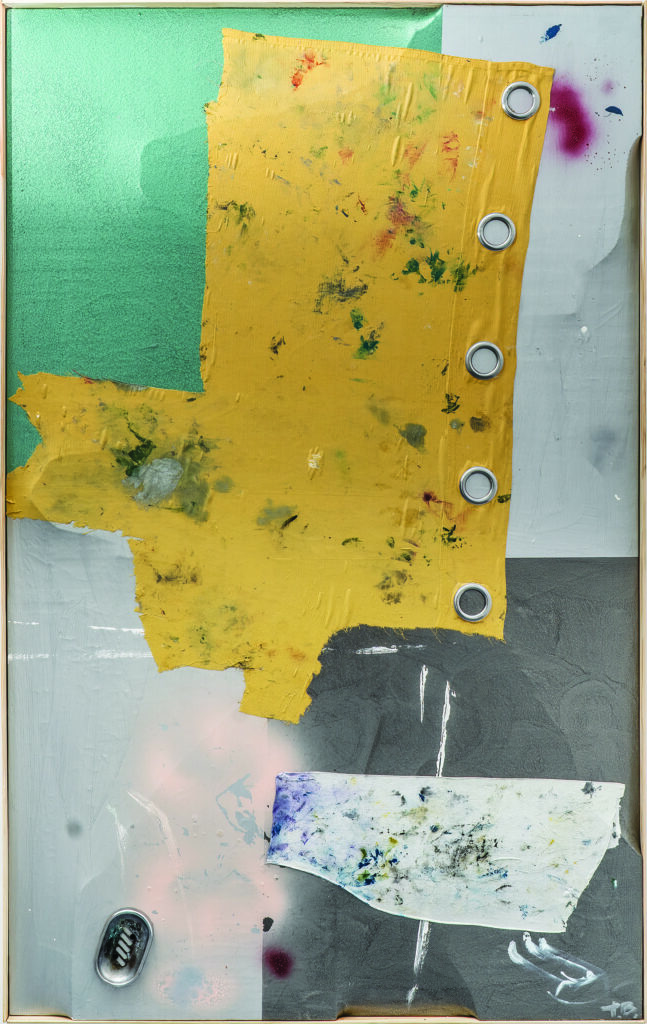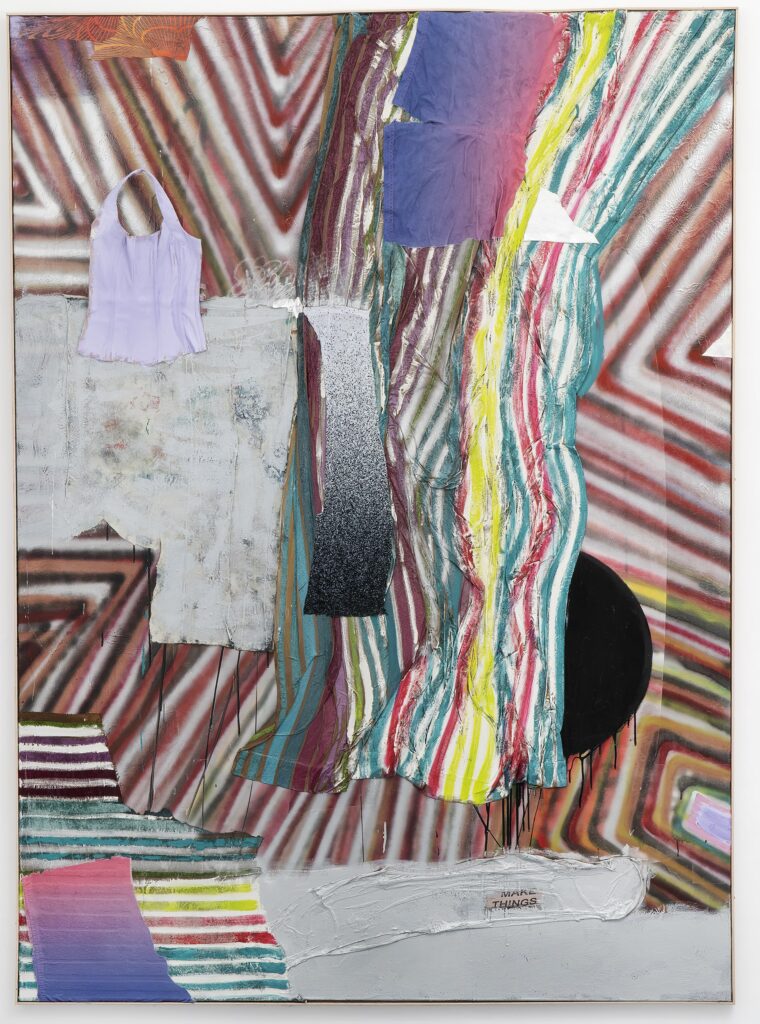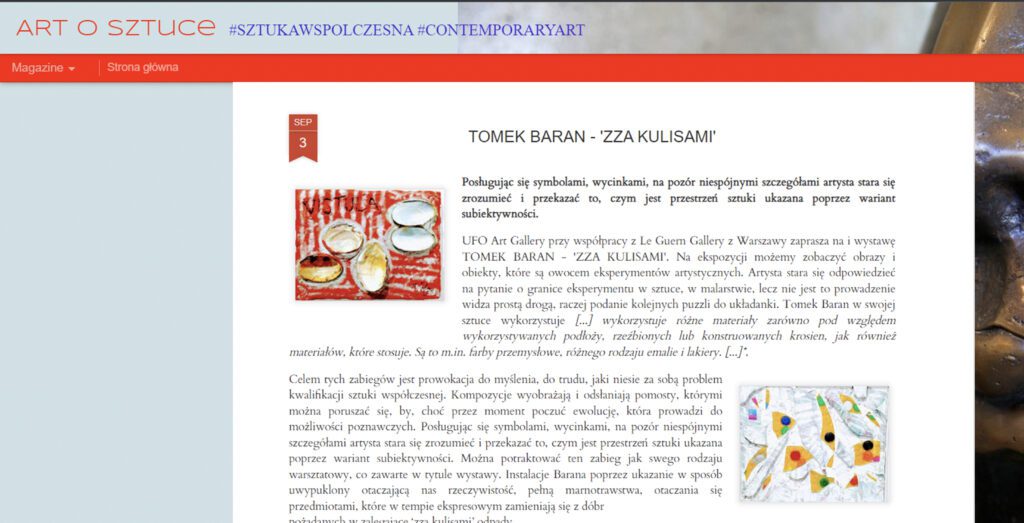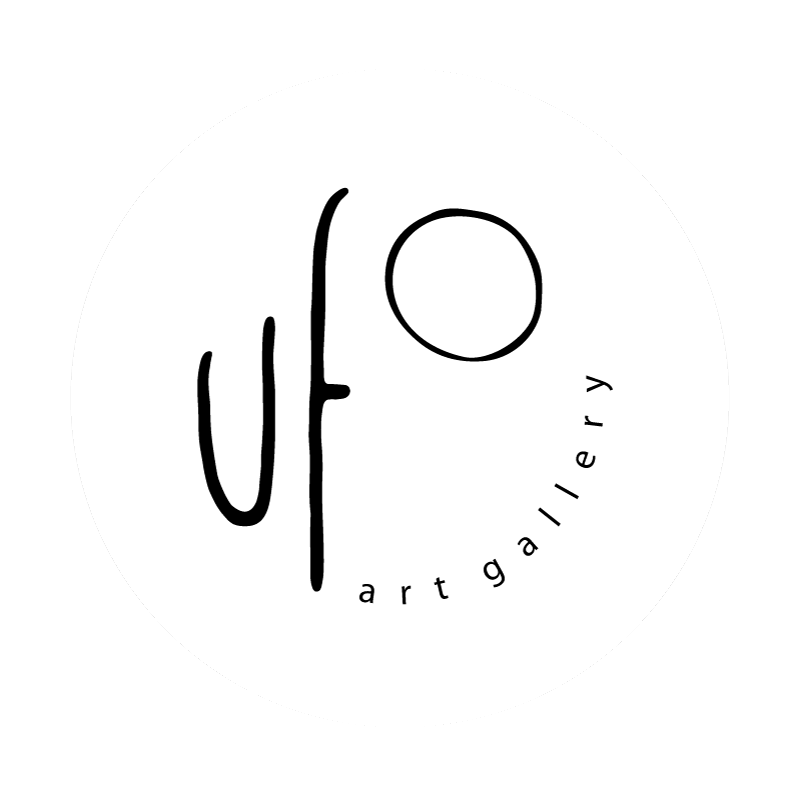Łukasz Białkowski: The title of the exhibition at the UFO Art Gallery once again touches upon the specificity of your work: the use of industrial paints and the use of found objects. It is something you have already made your audience accustomed to, and what do they mean in the subtitle?
Tomek Baran: I let the audience in behind the scenes. It is a bit like buying a film on DVD, with a half hour of bonus material showing the production process – the making of the film, rejected scenes or the director’s version.
ŁB: Is figurative painting also a kind of behind-the-scenes presentation of a view usually inaccessible to the public? You have never shown works of this type before.
TB: Already halfway through my university course, I had given up figurative painting. Since 2007, I have not shown such paintings in end-of-year exhibitions, either. It turns out that I am doing this for the first time in fifteen years.
ŁB: So, it’s a jubilee of sorts…
TB: Very much so [laughs].
ŁB: After 15 years, you are exhibiting a figurative painting for the first time and showing a bottom. Why precisely this part of the body?
TB: It is my own bum. I found the fragment of the door it is painted on opposite the flat of Marysia Ciborowska and Dominik Kopera, who run the UFO gallery. I took it to the studio and wondered how to elaborate on it if the bathroom door and window were already finished. I thought I would paint a bare bottom because that’s what you can see there. And then I added the caption MERCURY
ŁB: Does this have anything to do with Freddie Mercury?
TB: It is a group of three works that I titled with the names of the planets. The first was Saturn. For some time, I was creating works using underpants, which I somehow found strangely interesting. For example, with Ola Korzelska, we had an idea to collect worn underpants from artists, package them up, and sell them in a vending machine. In Saturn [Saturn], I used sports jockstraps, covering only the genitals but showing the whole bottom. In the gay world, they function as erotic gadgets. I got them from Rafał, and they had previously been used in a performance of two female performers, Agata Grabowska and Katarzyna Szugajew. I already had ready painting support, and when I wondered how to incorporate them into it, the pattern on the fixing strip made me think of Saturn’s rings. That’s how I arranged them, and that’s where the title came from. Following up on that cosmic theme, I added glitter.
ŁB: And what was on the painting support?
TB: The largest part of the painting support is a plank that Filip Rybkowski and Emilia Kina gave to Marta Antoniak, and later she gave to me. On this board, there are smaller boards that I discarded while working on earlier paintings. In selected places, I glued fabric over them, and on top of that, there was also some Hammerite alkyd and oil paint.
ŁB: Which painting was next?
TB: The next one was Wenus [Venus]. It was created, among other things, from a towel that I also got from someone. The two large holes you can see are left after circles that were cut out to be used in a completely different work. But I concluded that I would definitely use the towel itself with these holes for something, too. So, I applied it to a painting I had previously shown in 2017 at Le Guern in an exhibition of works by myself and the already deceased Piotr Grzybowski. It came back to me from the gallery, lay around for a while, and I decided to use it. A kind of recycling of my own work…
ŁB: Merkury [Mercury] is the closing painting of this planetary-mythological cycle.
TB: Apparently so, but I work on all the paintings in parallel. It is difficult to say that there is a strict sequence of creation here.
ŁB: Returning to the question of the title, where did it come from?
TB: It doesn’t come to mind as the first association, but Mercury is a Greco-Roman deity whose union with Venus produced a child who was both male and female. In Greek, it is Hermes and Aphrodite, and their child was actually Hermaphrodite.
ŁB: Does Saturn somehow fit into the gender themes, too?
TB: It does, indeed. Painting this picture during the pandemic, I thought it was also a bit about another pandemic – the wave of AIDS in the gay community of the 1980s. About Saturn eating his own children, as in Goya’s work.
ŁB: How do these three images relate to the others you show in UFO?
TB: They are actually a little separate in terms of subject matter. Still, in at least two aspects, they have a lot in common with the others – they were created over the last two years, and, like the rest, I created them based on recycling of sorts. So at least these two aspects link all the works I will present in this exhibition.
ŁB: Was the period of the past two years particularly significant for you?
TB: The last solo exhibition I did, Claustro at Le Guern in 2020, was the closure of a particular phase for me. On some of the paintings shown, I had been working even since 2013. That it was a reworking of myself, I realized only after that exhibition. And that is probably why, at the UFO exhibition, I’m showing things that are quite different from the earlier ones.
ŁB: The exhibition at Le Guern was, therefore, for you, the closure of a period that had actually lasted since you started to function in the gallery circuit fully.
TB: I had my first gallery exhibition in 2010 while I was still at university. But things really took off for good just around 2013. Anyway, during the first years after my degree, something also changed a little bit in my work because I stopped using tempera, rejected the typically flat painting supports and started experimenting with spatial canvases. My residency in Vienna also gave me a lot. That’s when I started using spray paint, for example.
ŁB: Since the stage that goes back to your student days has ended, does that mean that you have now begun to define yourself as a mature painter?
TB: Not necessarily, just something came to an end. I don’t know…
ŁB: You probably know, but you don’t want to say because it’s too personal… I guess you don’t want to go behind the scenes after all…
TB: (laughs).
ŁB: Let’s just confine ourselves to stating that the exhibition at UFO is, in a way, a “new beginning”.
TB: It initiates something new based on what has gone before.
ŁB: When talking about aspects that connect the works shown in UFO, you mentioned recycling. You have reached for found or used objects before, but now it has become a dominant feature of your working method.
TB: So far, I have not put much emphasis on this ‘recycling’ aspect of my work. It only happened once, during the exhibition with Piotr Grzybowski I mentioned earlier. I showed a work created using a piece of rubble with an imprinted relief. This rubble came from some Krakow tenement house, a piece of which I took to Warsaw and showed, arranging it on the gallery floor. This way, I somehow pointed to this found object, which was not subject to any treatment. But I began to use found objects regularly in 2016 during my residency at Miroslav Kubík’s gallery in Litomyšl, Czech Republic. I had two weeks to prepare the exhibition and decided to use everything I could find in the studio, such as cardboard boxes and felt, which were used to protect the floor from dirt. Admittedly, I took paints with me to the Czech Republic; I was to paint and go for walks during the day and party in the evenings. While there, however, I found that working with these found materials gave me a lot of pleasure and opened me up to something new.
ŁB: There seem to be at least three types of recycling in your realisations – using objects that you find or that others find for you, using your own things and a kind of metaphorical ‘recycling’, that is, borrowing various themes and materials from others. They rarely occur on their own, they are always mixed together, but an excellent example of the first type of recycling is a painting made of bed backrests…
TB: I called it Łóżko Van Gogha [Van Gogh’s Bed]. It consists of a front and a backrest of a bed. It was found by my father, who sent me a picture of it, asking if I could use it. I forgot about it quickly, and a few months later, I was completely surprised when he appeared on my doorstep with these backrests. I looked at them for three months, unsure what to do with them. Separately, they have a relatively unsophisticated shape. Eventually, I started playing with them and noticed that, in fact, they mirrored each other. I decided to do something to break this resemblance. I put them together, covered up the openwork, and added a few different pieces of wood, gelatine-soaked fabric I bought from a second-hand shop, and layers of paint. The bed they formed must have been very small. It reminded me of the bed in van Gogh’s painting depicting his room, which is also where the title came from.
ŁB: Do you often get such objects from relatives or friends?
TB: They sometimes send photos or call to say they have found something interesting. Sometimes I accept such items. At other times I conclude that I don’t see anything interesting in them.
ŁB: In the UFO, there are also works in which you recycle your clothes.
TB: Yes, in the painting entitled Puma [Puma], for example, I used my shorts. I even trimmed them once to make them skimpier. On the other hand, in the painting Olbrzymka [The Giantess], there is a curtain that I once picked up in an abandoned flat. There is also a T-shirt with the words “Make Things”. I used to wear it, too. As well as the shorts you see in it. I somehow came up with that title while painting – the fabric formed the shape of a woman. There are also elements from two other paintings. In the catalogue, we will probably show what they looked like before.
ŁB: Does using this processing method have an environmental dimension for you?
TB: It’s a kind of recycling, but I’d be fibbing if I said my message was ecology and the future of the Planet – working the way I do produces enormous amounts of rubbish, which has precious little to do with ecology.
ŁB: Nonetheless, some might associate, for example, the shattered bottle glass in one of the paintings with such an ecological vibe.
TB: You’re probably thinking of Pijackie piosenki [Drunkard Songs], to paint which I did use glass from smashed alcohol bottles. The lighter one came from a bottle of some strong Japanese alcohol and the green one from a beer bottle. Along the edges of the painting, I put a coat of painting and plastering putty and covered it with a layer of acrylic and varnish. But I wasn’t inspired by any ecological ideas, only by a mosaic that someone had DIYed in one of the townhouses in Żoliborz. It reminded me of the mosaics in Stalowa Wola, where I come from. Besides, two years ago, I attended an open-air ceramic workshop Paulina Ołowska organised in Kadynówka. We first worked with clay, firing it later. I am not interested in traditional ceramics, but I discovered then that working with such a material definitely has some appeal for me.
ŁB: This brings us neatly to the third type of recycling – ideas or inspiration taken from others.
TB: Indeed, a lot of glass has appeared in my recent works. I was surprised by Marta Antoniak, who stopped by one day and asked if I had decided to take up matter painting. I was a little surprised, but when I read somewhere that fabric, glass and metal were the primary media for the matter painters, I was simply delighted. This term fits me perfectly. But I prefer the term “a painter of material” even more.
ŁB: Are you worried that the association with the 1950s is already too old-school?
TB: Well, my work is something different. Starting with the fact that I use a lot of materials that were not available at the time. Besides, it’s about a different way of looking at art.
ŁB: Marta Antoniak could, after all, also be called a representative of matter painting or, if you prefer, a painter of material.
TB: Marta’s very point was that I have somehow come close to what she does in her art.
ŁB: To be honest, when I saw the work entitled Zmiennokształtny [The Shapeshifter], I had that impression, too. You have studios in the same flat, aren’t you afraid that your works will one day start to look dangerously similar?
TB: This is glass taken out of some bathroom doors. I first painted the circles, then smashed the whole thing up and started incorporating it into different images. Finally, I attached a piece of a Revolut card next to it. So, of course, there is a lot of Marta Antoniak’s influence in this work. But also from other people, Marta Sala or Rafał, for example. Some time ago, I curated an exhibition by Marta and Grzegorz Siembida at Le Guern. Marta stayed with me for a month and had her own studio, and I watched her work. As a result, I started using fabric, and Marta started using industrial paints. It was a very cool exchange and experience of each other.
